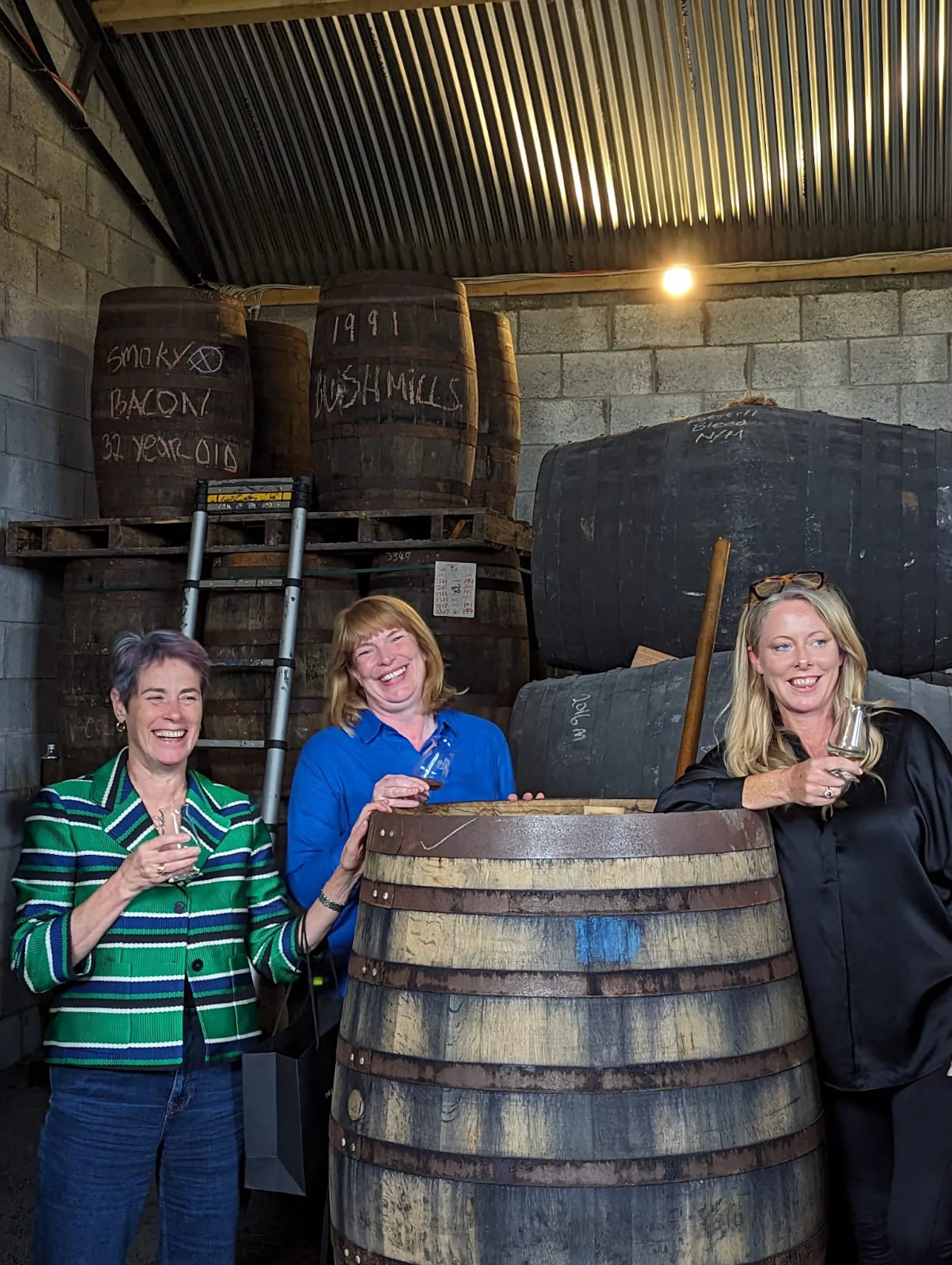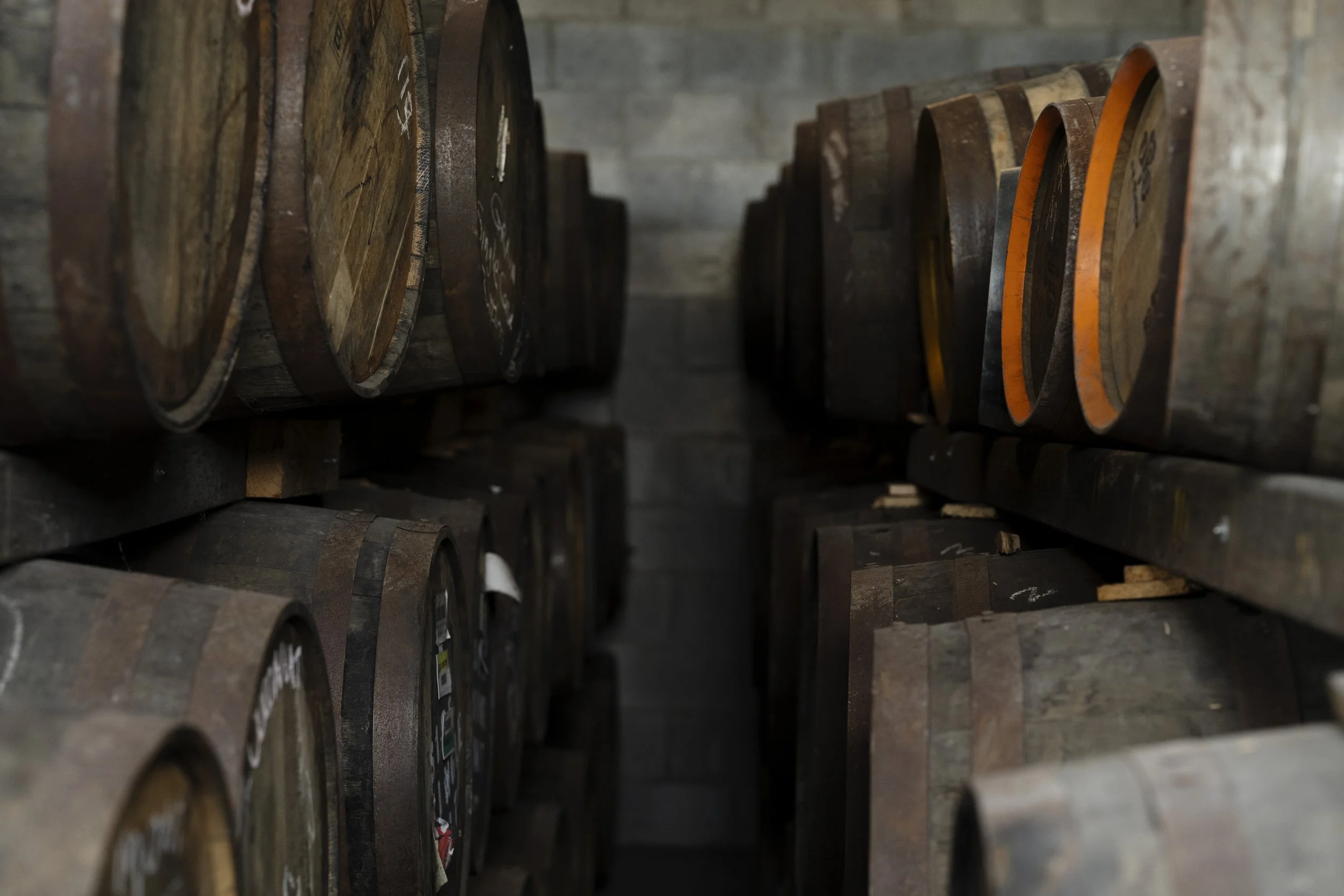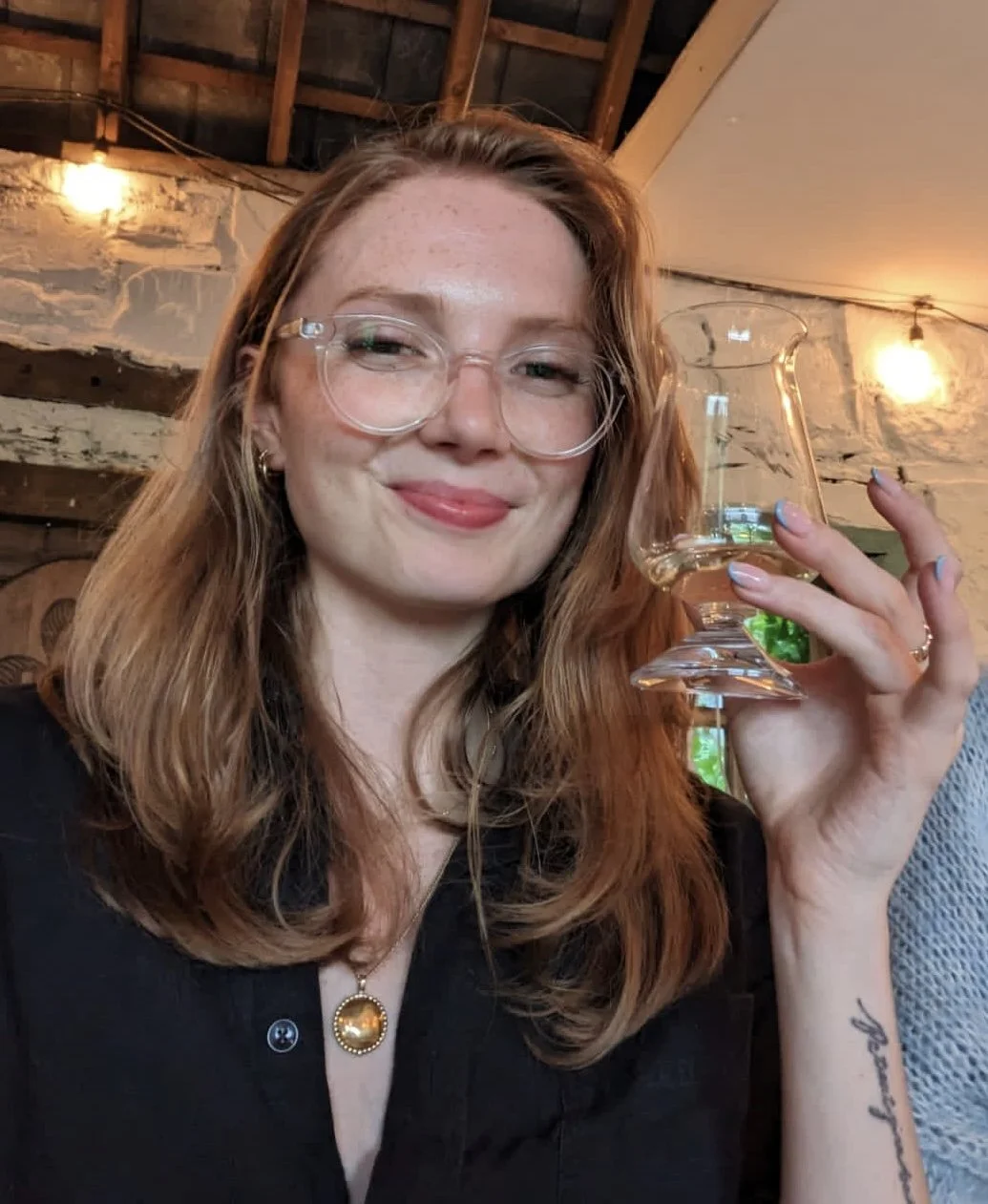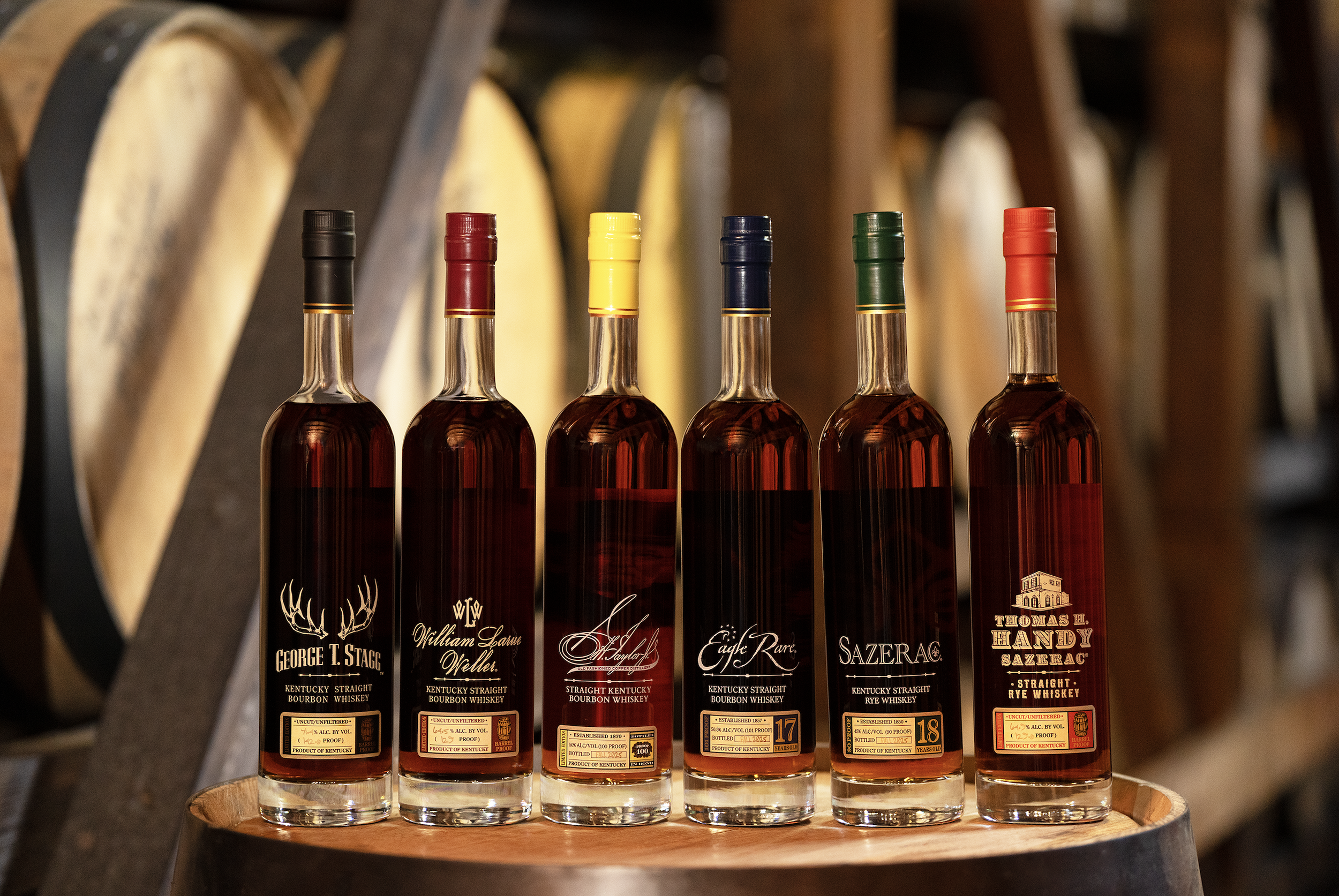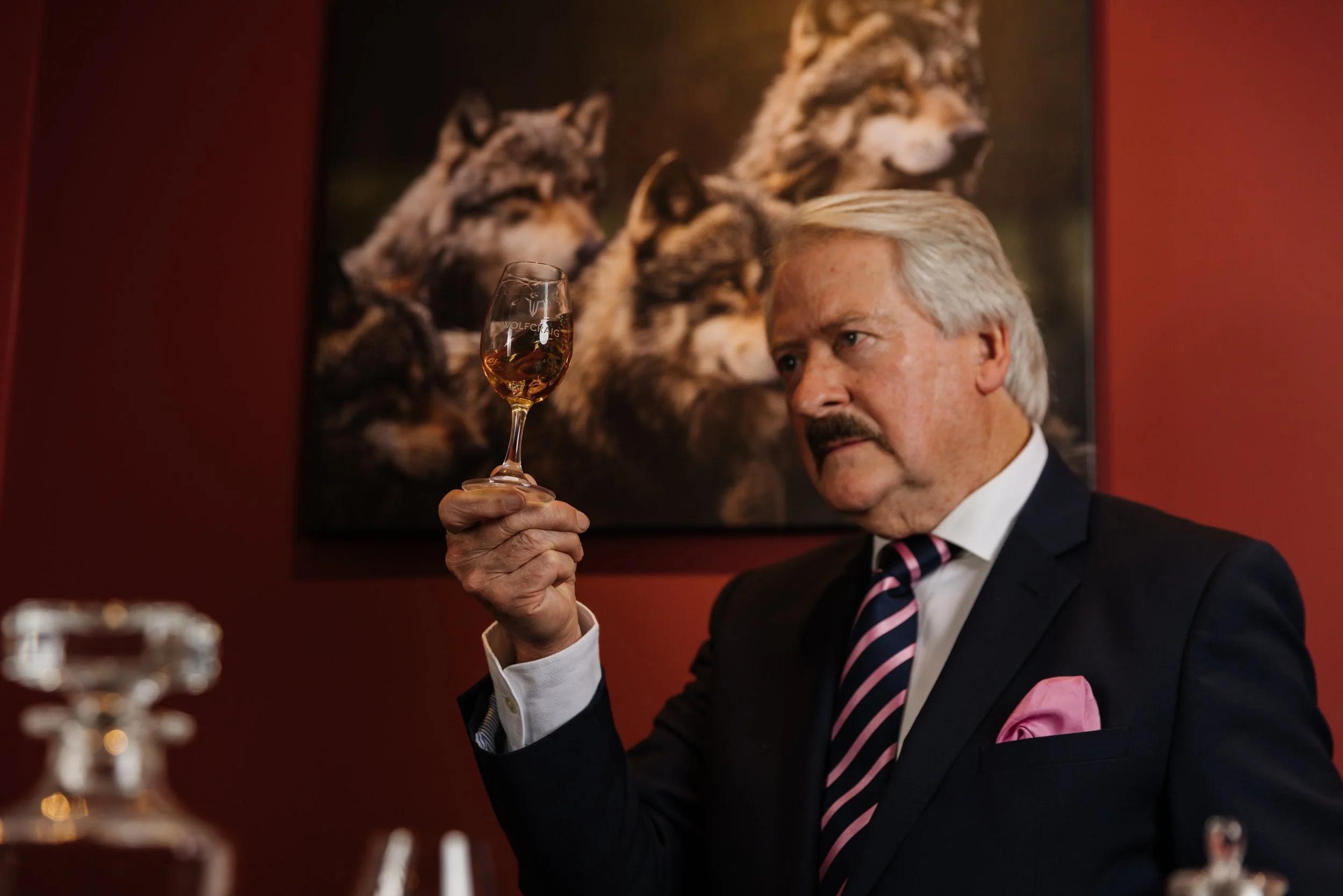‘Irish whiskey? It’s about the moment’
An accidental discovery of a long forgotten distillery led Louise McGuane to bring back not just a brand, but also to resurrect the craft of bonding. Alice Florence Orr heads to the West Coast of Ireland to meet the women leading the way in modern whiskey making
Louise McGuane’s family farm sits at the end of a twisty-turny road near the coast in West Country Clare, a landscape composed of flat grey rocks and tufted fields. Her house looks traditional enough, at least from the outside. A rackhouse, a cottage nearby. Neat beds of flowers ascending the limewash towards a low roof. Inside, a vast window and concrete floors that might have been plucked right out of a glossy magazine. A house that looks both to the past and the future. It couldn’t be more fitting.
When we arrive, the vast fields beyond the farm are briefly illuminated with amber light. Little dogs scamper between our legs as McGuane, our host for the day, smiles. A natural curator, it’s clear she’s satisfied with the scene she’s assembled. When I stepped off the plane earlier that day, the sky had been slate blue, the same colour as the Atlantic that crests endlessly against nearby cliffs. But right at that moment, everything is golden. We leave the house and walk to the rackhouse in anticipation. Something special awaits us there, something that immediately makes me forget the view.
‘Entering the barn, we’re met with rows of huge barrels the same cool grey as the morning sky. Each one is fat and happy, lying on its side while the whiskey inside ponders what it might become’
What does it mean to be a woman in whiskey? Many people have asked that question. Only a few have offered an answer. Women are ‘shaking up the industry’. They are ‘making waves in spirits’. As if they have no legacy of their own to preserve. Interviews with McGuane often involve questions about her position as the only solo female founder of an Irish Whiskey brand, but it is her commitment to resurrecting an industry that collapsed in Ireland in the late 1800s that intrigues me. Her brand, J.J. Corry, was originally operational from 1890 until 1932. Like the rest of the industry in Ireland, it crumpled when supply from distilleries dried up.
When McGuane resurrected the craft, she did so under the name of this old neighbour she uncovered while rummaging through a local antique shop. When she picked up a dusty J.J. Corry bottle, the handwritten type faded but still legible, she saw a future in Irish whiskey she was ready to build. Louise looks to the past as much as to the future.
Entering the barn, we’re met with rows of huge barrels the same cool grey as the morning sky. Each one is fat and happy, lying on its side while the whiskey inside ponders what it might become. On each barrel, tasting notes have been written in white chalk pen. Ginger. Spice. Nutty. Brioche. Bonding is an old art, a meticulous curation that takes vintages from different locations and skillfully combines them through further ageing and experimentation. It was an integral part of the Irish whiskey industry in the nineteenth century, a tradition that went quiet for decades until pioneers like Louise cracked open a forgotten craft.
Left to right: Rebecca Jago, Helen Mulholland and Louise McGuane
As a master whiskey bonder, McGuane marries different vintages together to create unique blends. That’s why her rackhouse is filled with barrels from all over Ireland. As she samples different vintages from her library for us to taste, two other women gather around the great barrels, joking with each other as McGuane’s Collie dog leaps onto the top of an upturned cask. It must be over a metre tall.
An elegant, self-assured woman welcomes us. Her name is Rebecca Jago, though you’ve likely heard about her before. She’s the Managing Director of The Last Drop, a London-based distillery she inherited from her father. She’s also the reason we’re all here. The Last Drop was co-founded by Rebecca’s father, Tom Jago. Beside her is Helen Mulholland, a Master Blender at Lough Gill distillery. Mulholland is gently spoken, often positioned at the periphery of a group – but a wallflower, she is not. Regarded as a legend in the Irish whiskey scene, Mulholland is open and opinionated, offering limitless wisdom with a warmth that can’t be feigned. They chat with me as I taste the whiskey, answering my daft questions with grace. They even throw in a few silly jokes of their own.
Louise McGuane
The year before, Jago gathered McGuane and Mulholland together to sample a collection of rare Irish whiskey from McGuane’s personal archive. The intention was to craft The Last Drop’s latest limited release, a unique thirty-two-year-old single malt Irish whiskey.
‘The liquid is the same golden hue as the sunset outside the window. It glints as it settles in the glass, an inviting honey shade’
Since it was founded in 2008, The Last Drop has brought less than three dozen releases to the market. These include Scotch and Japanese Whiskies, Cognac, Bourbon, Rum and, of course, Irish Whiskey. With less than 14,000 bottles in their whole portfolio, it’s clear that Jago only entertains the best selections. “At the heart of that creation and curation is a really deep belief in the meaning of friendship,” she tells me. “Louise is a dear friend and this is our first single malt Irish whiskey. It’s a complete collaboration and partnership. We couldn’t have done it without her archives.” And there we were, lucky enough to get a taste.
‘Louise’s Blend’ is crafted from a distinct selection of vintage 1991 Single Malts, finished in ex-Oloroso Sherry Butts for a warm, oaky flavour profile. First, I notice the colour. The liquid is the same golden hue as the sunset outside McGuane’s window. It glints as it settles in the glass, an inviting honey shade.
Rebecca Jago
You can taste raisins and apples immediately. It’s a fruit cake in a bottle. Cinnamon teases an autumn that’s approaching, despite the heat. An ideal version of the season you sometimes see in old landscape paintings. You can tell you’re drinking a single malt by the way the warmth builds just as the crisp apple begins to dissipate. The oak is there, as is the buttery flavour of burnt sugar. At the end, the slight bitterness of chocolate cuts through the autumn scene, revealing a smooth, complex whiskey that leaves you sucking happily on your own tongue.
As we’re drinking, McGuane tells the story of her family farm. Many years ago, as they were renovating rackhouse, a small Flintlock pistol and gunpowder carrier fell out the roof. Michael Cowman, European Sales Manager for The Last Drop and host of the Pour Decisions podcast, muses about its origin. Could it date to when the area was holding against imperial rule? It’s likely. The gun is no longer in the country but I can sense the weight of it – and the conflict it represents – in the stories that McGuane, Mulholland and Cowman tell us about the industry. I start to ponder the complexities of selling this history on a world stage, packaged in a sleek bottle and tied up in ribbon. But if we Scots can accept the difficult parts of our history to sell a few million pounds of Scotch every year, what’s to stop the Irish industry from doing the same? In Euros, of course. The past is only useful, after all, if it’s helping us move forward.
‘It’s certainly true that Irish whiskey is due for a moment of its own. Unhindered by some of the guidelines that fence Scotch production, such as barrel types, there is scope for experimentation within the industry’
I ask Mulholland what she thinks of the resurgence of Irish whiskey. “It’s not just about worrying about what’s lost,” she replies. “People worry too much. It’s about the moment.” It’s certainly true that Irish whiskey is due for a moment of its own. Unhindered by some of the guidelines that fence Scotch production, such as barrel types, there is scope for experimentation within the industry. And since bonding is an integral part of the heritage, we’ll undoubtedly see more unusual blends reach our glasses soon.
With plenty of experience in the global spirits market, McGuane is the right person to start the renaissance. She has a watchful presence. When standing in a crowd, she can be guarded; at dinner, she sometimes sits silently for minutes while the world moves around her. I admire her ability to be present, to sit apart from the chatter. What does being a woman in whiskey really mean for her?
“I couldn’t move forward without looking to the past,” she tells me. “But we can’t only look to the past.” One of the biggest parts of inheriting a 130-year whiskey heritage was ensuring the industry is future-proof. For many years, McGuane was involved in legislation and reform in the Irish whiskey industry, and while she didn’t make any enemies, there were some traditionalists who weren’t endeared to her approach. Modernisation is a central part of her vision, as is giving smaller players in the industry more agency in the conversation. She spent days looking through only legislative papers, seeking out forgotten clauses and obscure details.
“Isn’t that a bit nerdy?” I ask.
McGuane gives me a level gaze. “Someone’s got to do it.”
The past is never far from these women’s minds. It wouldn’t surprise me if Mulholland remembers the tasting notes of every vintage she’s ever sampled. Jago has recently founded The Assembly, a committee of experts from across the spirits industry, to safeguard knowledge and promote innovation; McGuane is one of the original members, so it was inevitable that a collaboration such as ‘Louise’s Blend’ was on the horizon.
No. 32: The Last Drop is a 32-year-old Single Malt Irish Whiskey created by Louise McGuane. Bottled at 46.4% ABV, it is limited to 663 bottles available worldwide. The suggested retail price in the UK is £2,250 including VAT (700ml + 50ml miniature).
“It’s a true celebration of friendship and partnership,” Jago toasts. “But it’s also a celebration of sharing remarkable spirits with your nearest and dearest – and the memories you make in doing so.”
As our glasses begin to empty, McGuane tells us that she continues to visit the grave of J.J. Corry, a sort of pilgrimage to the man whose legacy she has championed. History does not sit at odds with the future for these three women. They take ownership of both, comfortable in their positions as custodians and reformers. Most of all, they are nurturing it together. As daylight departs the family farm, I’m certain that the past, as well as the future of whiskey, is in very capable hands.
Alice Florence Orr is a writer and regular contributor to Barley, based in Edinburgh.



